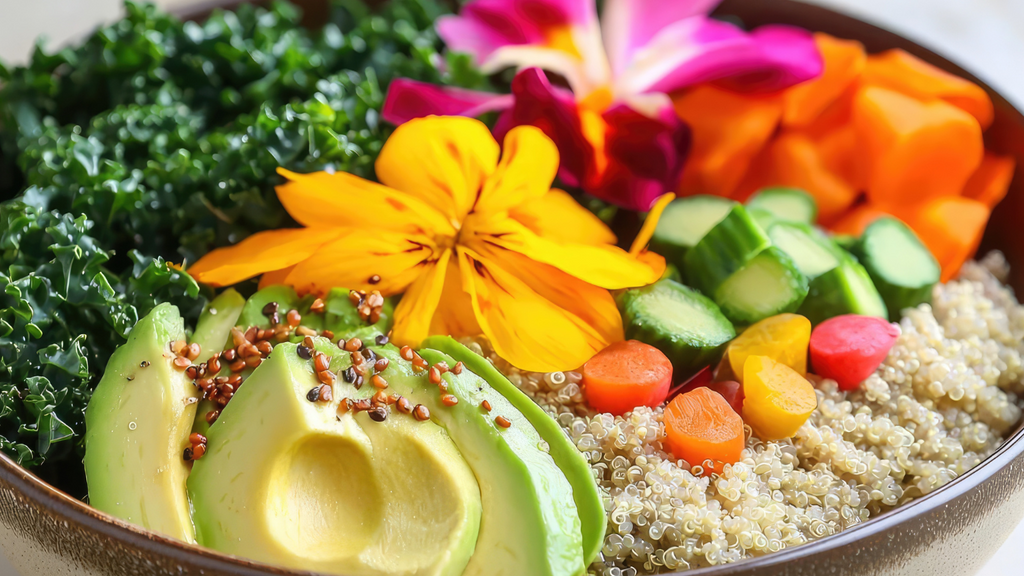For thousands of years, it was common knowledge: animal foods are the most healing, nutrient-rich foods on Earth. From tribes roasting fresh game over open fire to our grandparents savoring liver and eggs, these were the prized staples of human health.
But somehow… somewhere along the way… we forgot.
Mainstream media replaced beef with soy, butter with seed oils, and time-tested wisdom with trendy kale smoothies. Animal foods were demonized. Plant foods? Glorified like green gods. But here’s the truth:
🥦 Kale and broccoli? Modern inventions.
🍖 Organ meats, eggs, and raw dairy? Ancient superfoods.
Let’s look between the labels and uncover the truth about what really fuels the human body.
1. Fake vs. Real Superfoods: Can You Spot the Fraud?

Fake Superfoods: Kale, flax, spinach, soy, chia seeds, quinoa, rice & beans, oat milk, farmed salmon.
These are the darlings of food marketing—not nutrient density.
Real Superfoods: Red meat, pastured eggs, raw dairy, wild salmon, oysters, bone marrow, butter, raw honey.
These are the foods your ancestors risked their lives to secure. Nutrient-dense, bioavailable, and built for human health.
You can blend up all the spinach and flax seeds you want, but they’ll never touch the nutritional power of liver and egg yolks.
2. This Tribe Is Preparing a Traditional Meal… (Not Kale)

Imagine a group of Native Americans readying for a sacred hunt, armed with bows and spears… to gather soy protein isolate and curly kale.
Sounds absurd, right?
Because it is.
Our ancestors didn’t forage quinoa or soy milk. They hunted woolly mammoths, caught fresh fish, and prized organ meats. Real food. Real fuel. No superfood smoothie required.
3. Animal Foods vs. Plant Foods: Who Wins the Nutrient Showdown?

A side-by-side chart tells the story loud and clear:
| Nutrient | Animal Foods (Beef Liver, Eggs, Seafood) | Plant Foods (Spinach, Quinoa, Beans) |
|---|---|---|
| B12 | ✅ Super high | ❌ None |
| Heme Iron | ✅ Absorbable | ❌ Non-heme, poorly absorbed |
| Retinol (Vit A) | ✅ Ready to use | ❌ Beta-carotene (conversion needed) |
| Zinc | ✅ High bioavailability | ❌ Bound by phytates |
| Protein Quality | ✅ Complete amino acid profile | ❌ Incomplete or hard to digest |
Winner: Animal foods by a mile.
4. Wait… We Protected Crops Instead of Hunting Mammoths?!

Imagine our ancestors building fences to protect lentil fields… instead of sharpening spears to hunt bison.
The modern switch from hunting animals to farming monocrops wasn’t a nutritional upgrade—it was survival economics. But now that we have access to real animal foods again, why are we still pretending soy is sacred?
5. Animal vs. Plant Protein: Not All Grams Are Equal

Sure, 20g of protein from tofu and 20g from steak might look the same on a label—but in your body? Totally different story.
Animal protein is:
-
Complete (all 9 essential amino acids)
-
Easily digestible
-
Rich in muscle-building leucine and collagen-building glycine
Plant protein? Often incomplete, harder to digest, and lower in key aminos.
You’re not what you eat. You’re what you absorb.
6. “Mike Couldn’t Join the Hunt—His Cholesterol Was Too High”

Modern health advice in a meme:
Mike skipped out on the hunt because his doctor said red meat was bad.
So he stayed behind to eat kale and wait for his next statin refill.
Meanwhile, the tribe thrived on fresh liver and bone marrow—strong, clear-headed, and full of fire.
7. Iron Showdown: Spinach vs. Red Meat

You’ve heard the myth: “Spinach is full of iron!”
Yes… but it’s non-heme iron, which your body struggles to absorb—plus it’s locked up with oxalates.
Red meat, on the other hand, contains heme iron, the highly absorbable kind your cells crave. Anemia isn’t caused by steak—it’s caused by avoiding it.
8. Vitamin A: Carrots vs. Egg Yolks

Carrots = beta-carotene (which your body has to convert to usable vitamin A—poorly, we might add).
Egg yolks = retinol (active vitamin A, ready to roll).
Beta-carotene conversion can be as low as 3%. Meanwhile, egg yolks deliver the real thing—no guesswork, no conversion, just nourishment.
9. They Demonize Steak and Sunshine to Sell You This...

Think about it.
They’ve convinced people to fear:
-
Red meat (a complete food)
-
Sunshine (our ancestral light source)
-
Raw dairy (a living superfood)
-
Butter (rich in fat-soluble vitamins)
So they can sell:
-
Soy “meat”
-
Oat milk
-
Sunscreen loaded with endocrine disruptors
-
Seed oils (the real dietary villain)
-
Antidepressants for when your nutrient-deficient diet tanks your mood
We don’t call that progress. We call it a marketing scam.
Closing Thoughts: Forget Kale. Eat Like a Human.
If broccoli and kale were actually superfoods, wouldn’t you crave them raw, without dressing, every day?
But your body knows better.
It knows that real nourishment comes from meat, eggs, raw dairy, seafood, and ancestral fats.
The kind of foods you’ll find in every bite of a Carnivore Bar—crafted from real ingredients with nothing to hide.
References:
-
Oussalah, Amine, et al. "Association of Vegetarian Diet with Inflammatory Biomarkers: A Systematic Review and Meta-Analysis of Observational Studies." Clinical Nutrition, vol. 40, no. 5, 2021, pp. 3483–3496. https://doi.org/10.1016/j.clnu.2020.11.031
-
Mikkelsen, Kristian H., et al. "Effect of Vitamin B12 Supplementation on Cognitive Function and Depression: A Systematic Review and Meta-Analysis." The American Journal of Clinical Nutrition, vol. 109, no. 6, 2019, pp. 1194–1201. https://doi.org/10.1093/ajcn/nqz043
-
Gorissen, Stefan H.M., et al. "Protein Content and Amino Acid Composition of Commercial Plant-Based Protein Isolates." Amino Acids, vol. 50, no. 12, 2018, pp. 1685–1695. https://doi.org/10.1007/s00726-018-2640-5
-
Haskell, Molly J., et al. "Retinol and Carotenoids as Biomarkers of Vitamin A Status: A Review of Current Literature." Nutrition Reviews, vol. 63, no. 6, 2005, pp. 196–202. https://doi.org/10.1111/j.1753-4887.2005.tb00138.x
-
Hurrell, Richard, and Michael Egli. "Iron Bioavailability and Dietary Reference Values." The American Journal of Clinical Nutrition, vol. 91, no. 5, 2010, pp. 1461S–1467S. https://doi.org/10.3945/ajcn.2010.28674F

